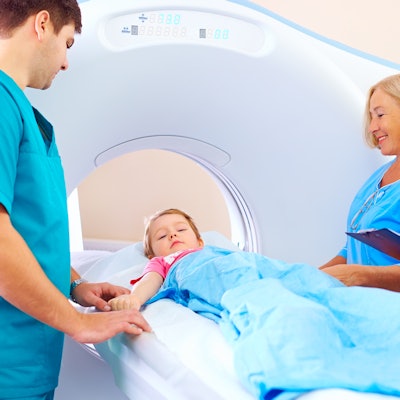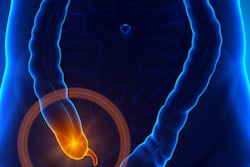
Children with suspected appendicitis were nearly three times as likely to undergo a CT exam at a nonpediatric facility than at a pediatric hospital in recent study, published online in the Journal of Surgical Research. In any case, ultrasound might have provided a radiation-free alternative to CT, according to the researchers.
The debate over the best imaging modality to use for diagnosing pediatric appendicitis has persisted for years, with CT, MRI, and ultrasound each providing distinct pros and cons. CT and MRI generally deliver the highest overall diagnostic accuracy, but concerns over the potential harm of radiation exposure from CT and the high cost of MRI have led many guidelines to recommend ultrasound as the ideal first-line imaging exam.
In the current study, senior author Dr. Alana Beres and colleagues from the University of Texas Southwestern Medical Center set out to determine the differences between the imaging practices of nonpediatric and pediatric hospitals when evaluating children suspected of having acute appendicitis.
The researchers examined data from all children who underwent an ultrasound or CT exam and a subsequent appendectomy at their pediatric hospital in 2015. Among the 1,153 patients assessed, 911 were directly admitted to the pediatric hospital, and 242 were transfers from a nonpediatric facility (J Surg Res, March 25, 2019).
Overall, transfer patients had almost threefold the likelihood of receiving a CT scan instead of just an ultrasound scan than did children evaluated at the pediatric hospital. Yet the researchers found no statistically significant difference in the rate of appendicitis between the two groups of patients (p = 0.74).
| Diagnosis and treatment of appendicitis at pediatric vs. nonpediatric hospitals | ||
| Nonpediatric hospital | Pediatric hospital | |
| Rate of CT utilization* | 73.5% | 26.4% |
| Rate of confirmed appendicitis | 98.3% | 98% |
The researchers also identified considerable differences in the type of discrete imaging findings reported for the two patient cohorts. Physicians most frequently reported noncompressible appendix, hyperemia, and echogenicity/stranding for patients at the pediatric hospital, whereas they tended to report wall thickening, appendiceal dilation, bowel dilation, and lymphadenopathy at the nonpediatric facilities.
Nonetheless, the team found no statistically significant differences between the diagnostic performance of ultrasound and CT at the referral centers for the majority of these imaging features, suggesting that the nonpediatric facilities may be able to rely more frequently on ultrasound for diagnosing appendicitis, according to the authors.
The distinctions in imaging preferences and reporting tendencies between the pediatric and nonpediatric hospitals likely stem from a variety of factors, such as the availability of more dedicated specialists at pediatric hospitals and the need to have a strong enough surgical indication to justify transferring patients to a pediatric facility, they noted.
"Taken together, this information highlights the continued need to shift the pendulum toward greater [ultrasound] reliance by transferring centers ... and strengthens the argument to improve access to high-quality [ultrasound] for all children undergoing workup for appendicitis," they wrote.




















